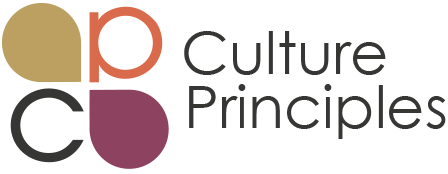
It’s incredible how quickly time flies. One moment, you’re watching your kids take their first steps, and the next, they’re walking across the stage at their graduation. This swift passage of time is something we all acknowledge. But how we internalize it truly depends on our frame of reference. If we’re not intentional, time doesn’t just fly—it vanishes. We look up and wonder where the years have gone, often regretting missed opportunities or unfulfilled dreams. Like sand slipping through our fingers, we can’t seem to hold onto it no matter how tightly we grip it.
So, why not reframe this perspective? Time flies whether or not you’re the pilot, but taking the controls can shift the narrative. Being intentional about aligning your time with your values, goals, and priorities means you’re not just letting moments pass but creating moments that matter. And this is where the heart of the matter lies in Diversity, Equity, and Inclusion (DEI).
When it comes to DEI initiatives, haven’t we all heard—or perhaps even uttered—the phrase, ‘I don’t have the time’? Time is indeed a precious commodity, but let’s be clear: it’s often a convenient excuse we hide behind to sidestep our responsibilities toward fostering a more equitable and inclusive environment. It’s time to cut through the noise and challenge this mindset.
In a world where time is in constant motion, we must ask ourselves: Are we merely passive observers, or are we pilots steering our own course? Time itself isn’t the barrier to implementing DEI initiatives; it’s our mindset and priorities that dictate our actions.
Today, we’re diving deep into how you can break through these self-imposed barriers. The goal? To harness your inherent resourcefulness to understand and implement DEI initiatives, even within the confines of a tight schedule.
The Misconception of Time as a Barrier
One of my nonprofit clients took the bold step of centering racial equity as a cornerstone of their strategic goals. Like many organizations, they were grappling with time constraints and staffing shortages. But instead of viewing these challenges as roadblocks, they saw them as catalysts for transformation. In their eyes, incorporating DEI wasn’t just another box to check; it was an imperative that would enable them to meet their mission more authentically and effectively. This was a remarkable shift in mindset, turning perceived limitations into launching pads for impact.
The team didn’t just pay lip service to these ideals; they internalized them. Each staff member received training in the tasks specific to their job roles and how those roles intersect with the organization’s DEI goals. Now, everyone from the fundraising team to the program staff understands how their individual efforts contribute to advancing racial equity. This integrated approach has been a game-changer. The nonprofit has been more successful in its outreach and programs, and the team has become a model for what it means to operate as a racially equitable organization. This isn’t DEI as an add-on; this is DEI as a lens through which all work is viewed, analyzed, and executed. It’s a vivid testament to the exponential power of intentional action—even when time is of the essence.
Rapid Response or Long Game?
I previously wrote about the tension between urgency and sustainability, where I have been asked whether the goal is to act swiftly or to take a more deliberate approach. Here’s the revelation: it’s not an either-or scenario. This is about mastering the art of holding two seemingly conflicting ideas in tension, allowing for swift action while laying the groundwork for long-lasting change.
Carving out time and space for this work can reduce the potential of falling into the trap of immediate but superficial solutions—the quick wins that, while emotionally satisfying, don’t necessarily change the core issues. I’m talking about actions like taking down a controversial statue or changing a company logo. While these might offer a sense of progress, they are essentially a form of optical allyship, not penetrating the systemic depths where real change happens. This is where the allure of the “low-hanging fruit” can be deceptive, propelled by societal pressures and our own unconscious biases.
A genuinely sustainable approach to DEI requires us to slow down, even as we move urgently, to dig deeper into the structures and norms perpetuating inequities. It’s about constructing organizations and cultures that aren’t just reactive but are resilient and reflexive, continuously challenging power dynamics and pushing for introspection and improvement.
So, as you grapple with the ever-elusive resource that is time, remember that being intentional doesn’t solely mean being slow to act—it means being effective. Just as you can be the pilot of your own time, steering each moment towards impactful change, you can also be the architect of a DEI strategy that is both immediate and enduring. In doing so, you’re not just answering the call of the present moment but building a bridge to a more equitable future.
Blending this perspective with our earlier discussion about time, it’s clear that the narrative isn’t just about whether we make time for what matters. It’s about how we use that time to strike a balance between urgency and deep, systemic change. When you’re piloting the ship with such intentionality, every tick of the clock leads toward transformative impact. Time, then, is not a barrier but a canvas upon which we paint our most vivid commitments to diversity, equity, and inclusion.
Making the Most of Your Time – Resourcefulness in Action
Resourcefulness isn’t just about making the most of what you’ve got; it’s about leveraging every minute, every interaction, and every decision to propel your DEI journey forward. Believe me, the resources are abundant. Whether it’s podcasts for your commute, newsletters to read over lunch, or online courses for your weekends, there’s an ocean of opportunity that demands not time in abundance but the wisdom to use it effectively.
Take one of my coaching clients as a compelling example. She meets with me bi-weekly to deepen her understanding of cultural dynamics and diversity. But she doesn’t just absorb; she applies. The impact of her intentional focus on DEI is already rippling through her organization. From mediating conflicts rooted in cultural misunderstandings to creating an atmosphere of genuine inclusivity, her transformation is turning heads among her colleagues.
She illustrates a critical point: DEI transformation doesn’t hinge on grand, sweeping gestures. Instead, it’s in the aggregation of small, intentional actions persistently executed. This is a truth I consistently share with leaders: Progress isn’t defined by the grandiosity of your actions but by their consistent and meaningful application.
Let’s confront the myth of busyness that plagues our work culture. It’s easy to perceive DEI as an ‘additional’ commitment. That’s a mindset we need to pivot away from. When we integrate DEI into our everyday responsibilities, it evolves from a task to an essential component of our professional and personal growth.
This integration is also about involving our colleagues and teams in our DEI commitment. Consider adding a “diversity minute” at the beginning of team meetings to share insights or success stories. This practice requires minimal time investment but can significantly contribute to fostering a culture of inclusion. And don’t underestimate the power of leading by example. My client’s resourceful engagement with DEI has not only elevated her own understanding but is also inspiring those around her. Leadership, in this context, is contagious.
So, it’s time to dismiss the idea that we lack the time for DEI. The real issue isn’t about finding time; it’s about making it—and using it judiciously. In doing so, you not only bolster your own DEI competencies but also contribute to a chain reaction that has the potential to revolutionize your organization. In the grand scheme, it’s about turning workplaces into spaces where DEI is not an add-on but the very fabric that holds everything together.
As we continue to reshape our understanding of DEI, I pose this question: How are you leveraging your time, no matter how limited, to contribute to a more equitable and inclusive world—both within your organization and beyond? Share your strategies and insights below, and let’s elevate this crucial conversation together.
